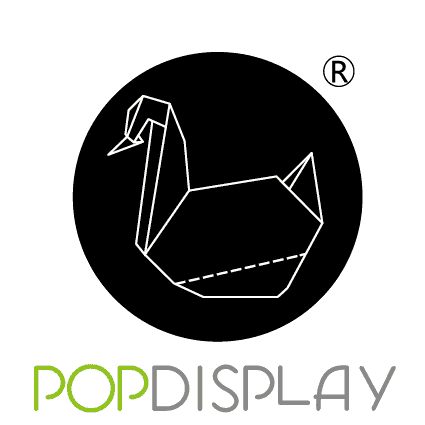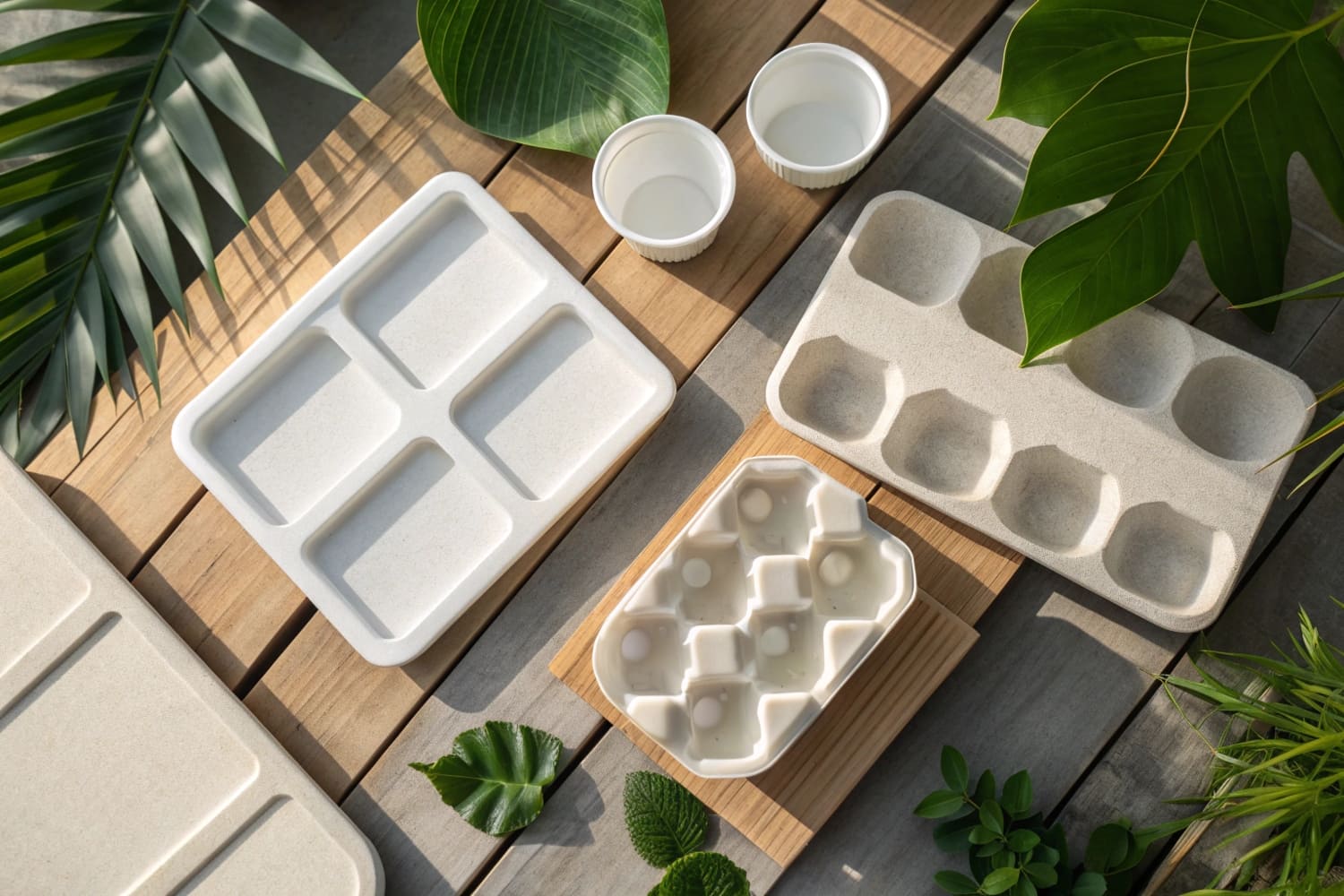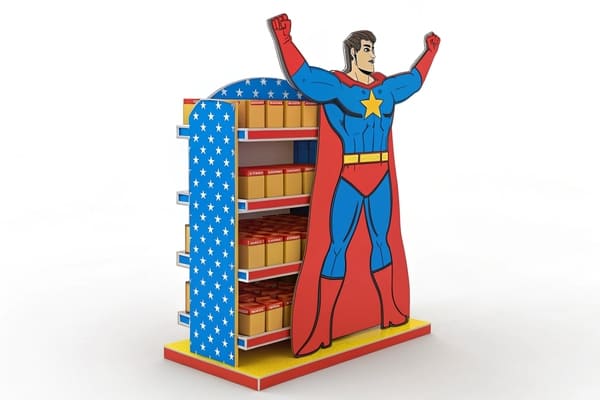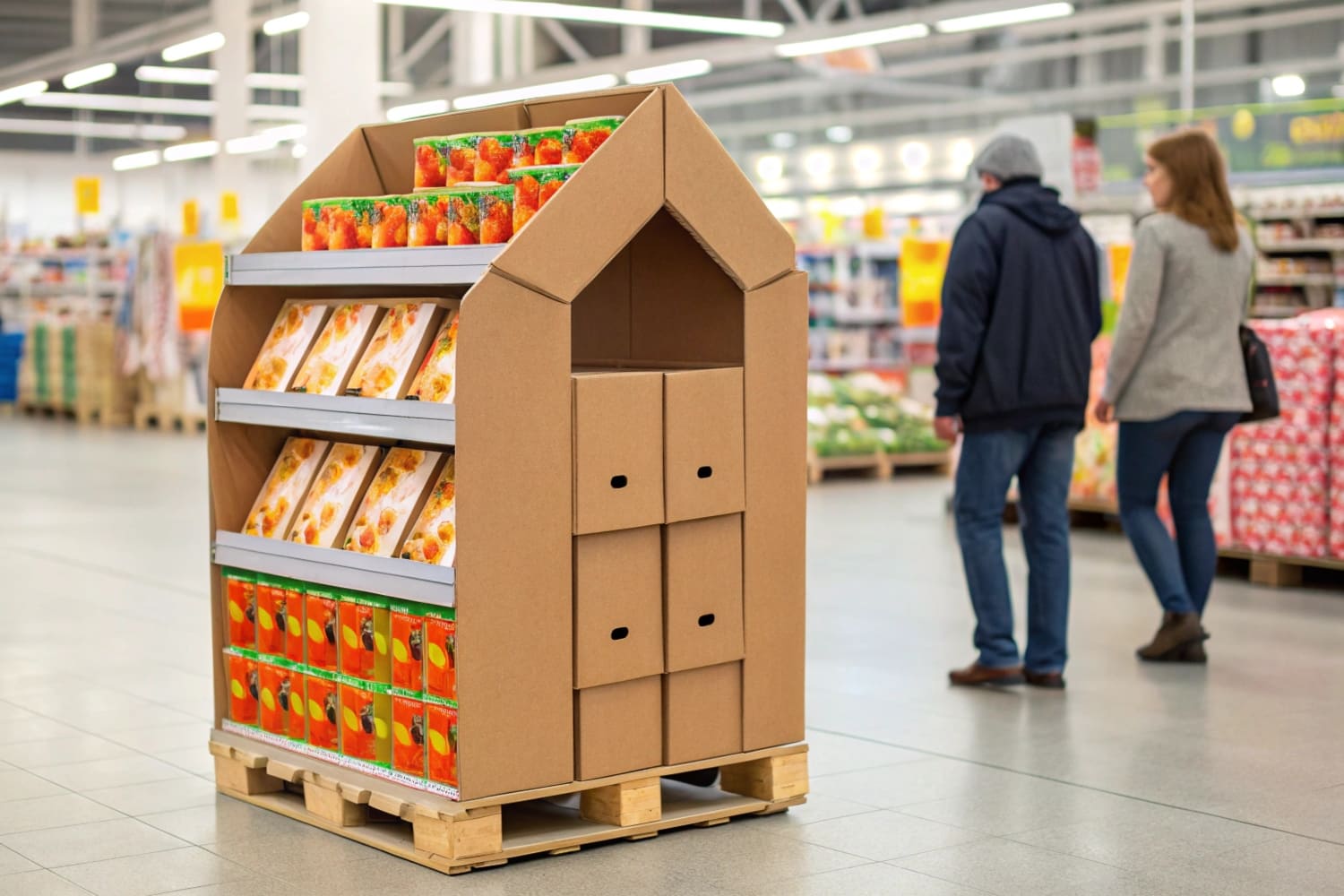ポップディスプレイの主なタイプは何ですか?
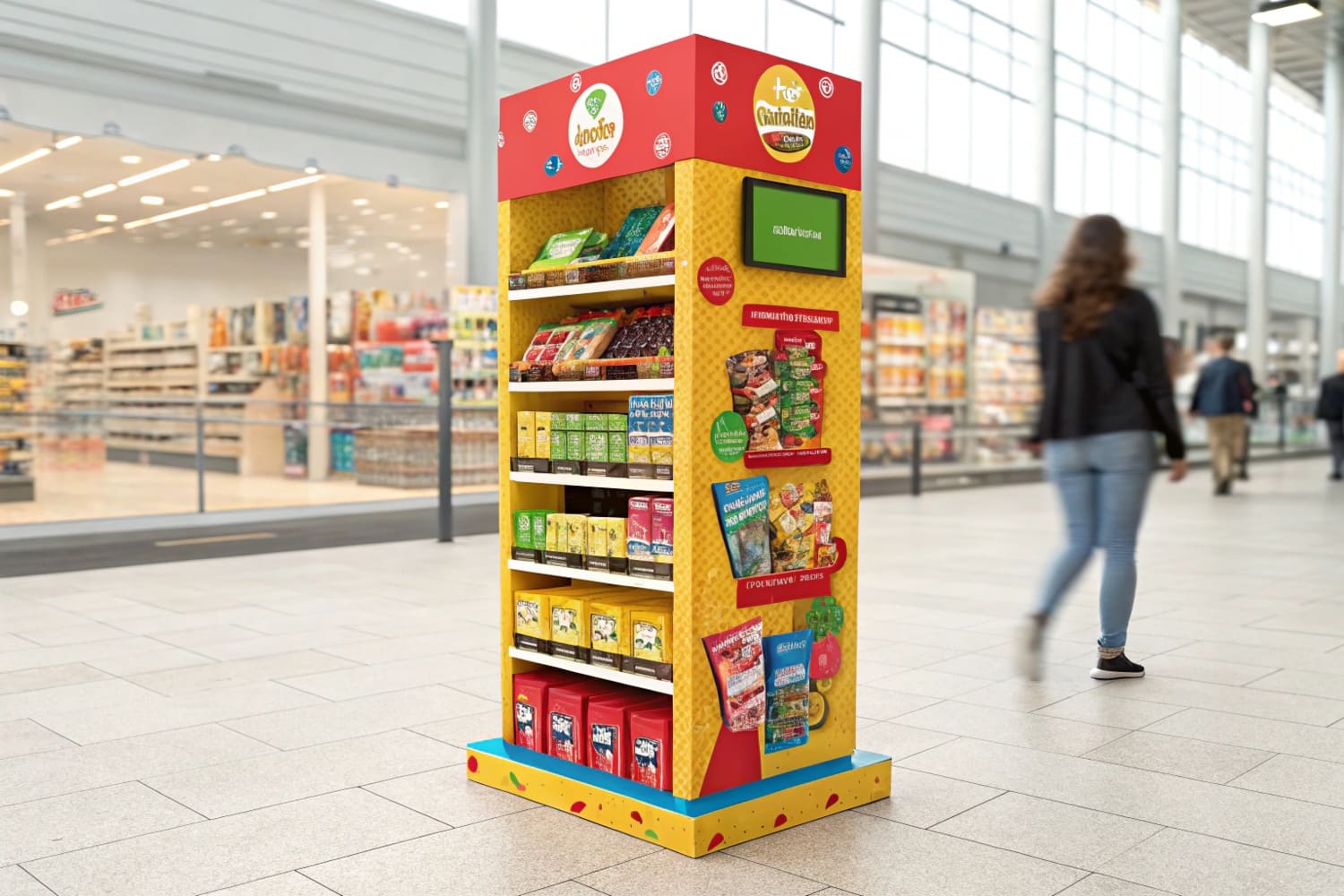
顧客は秒だけ停止します。ディスプレイは目をキャプチャし、利益を約束し、アクションをプッシュする必要があります。各ポップオプションがその瞬間をどのように利益に変えるかを示します。
ポップディスプレイは、フロア、カウンター、シェルフ、デジタルの4つのコアグループに分類されます。各グループは、明確な製品サイズ、買い物客の距離、販売目標を提供します。
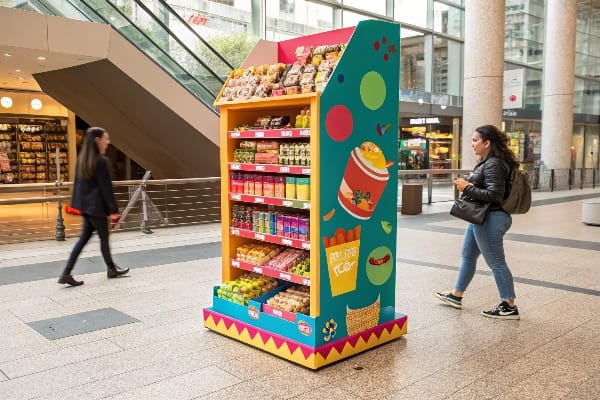
実際に在庫を移動するディスプレイのピッキング、設計、購入に関する実用的なアドバイスが必要な場合は、読み続けてください。
さまざまなポップディスプレイは何ですか?
選択が多すぎると疑問が生じます。店内に座っている場所によるオプションのグループ化は、霧をクリアし、決定をスピードします。
一般的なポップディスプレイには、パレットスタンド、ダンプビン、自立型ユニット、エンドキャップ、インタラクティブスクリーンが含まれます。
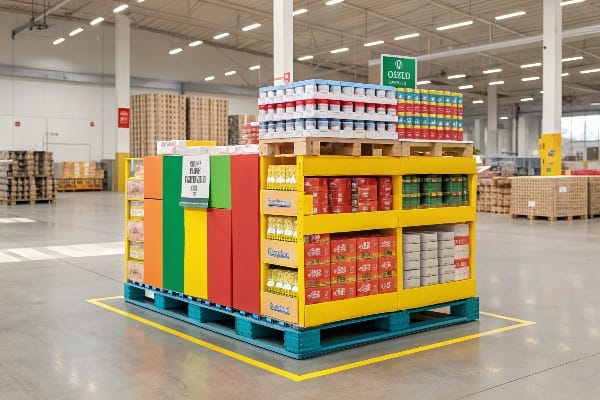
位置形状機能
ディスプレイは、エントリ、通路、チェックアウトの3つのストアゾーンに分けます。位置は、サイズ、メッセージ、および材料強度を決定します。
| ストアゾーン | 典型的なディスプレイ | 理想的な製品サイズ | 重要な目標 |
|---|---|---|---|
| エントリ | パレットスタンド1 | 大きくてかさばる | 即時のブランドスプラッシュ |
| 通路 | エンドキャップ2 | 中程度のパッケージ | ルーチンパスを中断します |
| チェックアウト | カウンターユニット | 衝動ミニ | 最後のアドオン |
ゾーンマッチングが重要な理由
米国のハンティングギアバイヤーのためにデザインするとき、私は彼らの買い物客が重いクロスボウボックスを引っ張っていることを想像しています。ドアの近くのパレットスタンドは、その重量を処理し、完全なグラフィックスを表示し、フォークリフトを速くドロップすることができます。対照的に、ガムの横にある光沢のあるカウンターユニットは、小さなフットプリントを求めて戦います。それらを混ぜるスペースとお金を廃棄します。
4つのコア構造
- パレットスタンド- ワンピースベース、300 kgを保持し、平らに船、ポップが開きます。
- ダンプビン- トップ、奇妙な形をした商品を開いて、素早いグラブを奨励します。
- 自立型タワー3 - スリム、4つの側面、ストーリーパネル。
- エンドキャップキット- スロット付きの棚は、ゴンドラにロックされます。
デザインのヒント
e-fluteボードに4色のアートを印刷し、マットフィルムでラミネートし、隠されたMDFブレースでコーナーを強化します。このブレンドは貨物の光を維持しますが、倉庫の隆起に抵抗します。
私は広州で3つの生産ラインを実行し、これらの形状を毎日締めます。同じツールは、昨シーズン、Barnett Outdoorsのクロスボウディスプレイテストをカットしました。迅速なプロトタイプにより、エンジニアは発射を狩る前に棚の高さを微調整し、大量走行中に費用のかかるエラーを回避しました。
ポップの種類はいくつありますか?
バイヤーはしばしば野生数を聞きます。このようなリストは、注文を圧倒し、失速します。
Popを4つのマスタータイプに分類し、それぞれを2つのサブタイプに分割し、8つの明確な選択肢を与えます。
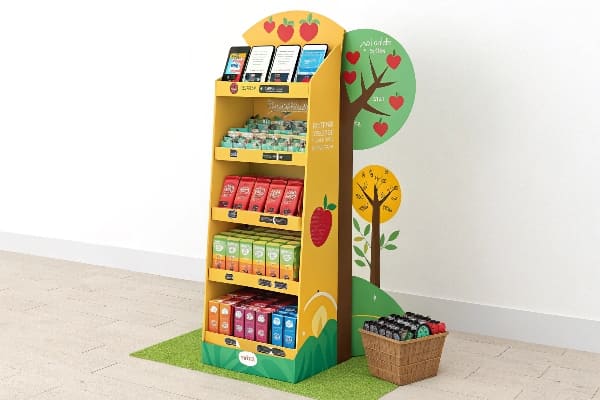
8つの実用的な選択
| マスタータイプ | サブタイプa | サブタイプb |
|---|---|---|
| 床 | パレットスタンド | アイランドディスプレイ |
| カウンタ | 重力供給 | ブックスタイル |
| 棚 | クリップストリップ | 棚の話者 |
| デジタル | キオスクにタッチします | モーションセンサーシェルフエッジ |
リストを短くするのはなぜですか
小売チェーンは、タイトなプラノグラム4 。簡潔なメニューは、内部承認を速めます。英国のディストリビューターを売り込むと、4つのマスタータイプが単一のスライドに適合し、意思決定者は眉をひそめます。
フレームワークの使用方法
床:飲み物のカートンのような重い季節のストックがここにあります。パレットスタンドはフォークリフトノックから肩をすくめます。 QRコードはオンラインのアップセルを駆動します。
サブタイプのテスト
ボリューム取引に署名する前に、48時間の負荷テスト6を。砂袋を製品の重量に等しくし、30°でユニットを傾けます。壁がひずみで曲がった場合、b-fluteをEB二重壁に交換します。私のクライアントは、ビデオ証明を見て、自信を得て、サインオフします。
POSディスプレイのさまざまな種類は何ですか?
多くの人がPOSとPOPを混同します。ラインはチェックアウトにあり、スペースはコストがかかり、秒は少ないです。
POSディスプレイは、トランザクションポイントに焦点を当てています:カウンタートップトレイ、クレジット端末の近くのクリップストリップ、およびアドオンをプロンプトする小さなスクリーントッパー。
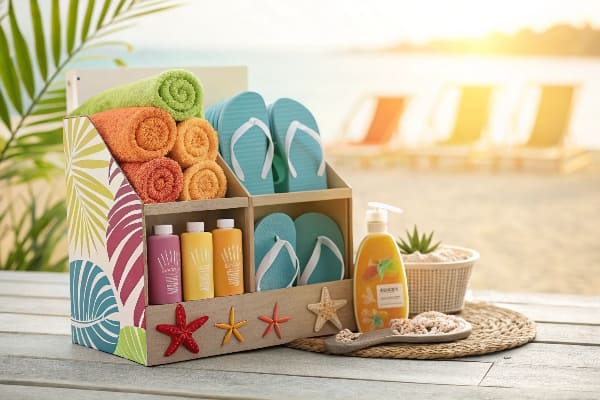
3人のチェックアウトチャンピオン
| 画面 | サイズ(cm) | に最適です | 旅行パス |
|---|---|---|---|
| カウンタートレイ | 30×20×15 | ガム、バッテリー | まっすぐ |
| クリップストリップ | 6×90ストリップ | 小さなバッグ | 目レベルの側面 |
| デジタルスクリーントッパー | 25×18 | ロイヤルティプロンプト | 上の端子 |
サイズがゾーンを支配する理由
Checkout Countersは、米国のチェーンで平均40 cmの深さです。 7私は10 cmのクリアランスを残すトレイを設計して、レジ係がスムーズにスキャンします。特大のビンはレジ係の苦情を引き起こし、監査後に消えます。
衝動のためのデザイン
色は叫ぶ必要があります。 BarnettのBroadhead Blisterパックには、ハイコントラストブラックとネオンオレンジを選択します。ハンターの目はオレンジに閉じ込められています。
ロジスティクスエッジ
POSトレイ船は、外側のカートンあたり10個のネストされています。 8貨物は60%減少します。セットアップ時間は2倍に収縮し、1枚のタックフラップになります。スタッフは1分未満でフィニッシュし、労働力を満足させます。
支払い統合画面
小さなLCDは5秒のクリップをループします。クリップは「今日のボルトを半額で追加してください」で終わります。 QRがポップアップします。レジ係が商品を袋に入れている間、買い物客をスキャンします。コンバージョンは、20の中西部店舗でA/Bテストあたり12%を持ち上げます。 9
小売商品のポップとは何ですか?
本社の全員がディスプレイの専門用語を話すわけではありません。 CFOが尋ねるとき、私は簡単なラインが必要です。
小売業では、ポップは製品の近くに配置されたスタンドまたはグラフィックが、選択した時点で購入決定に影響を与えるために配置されています。
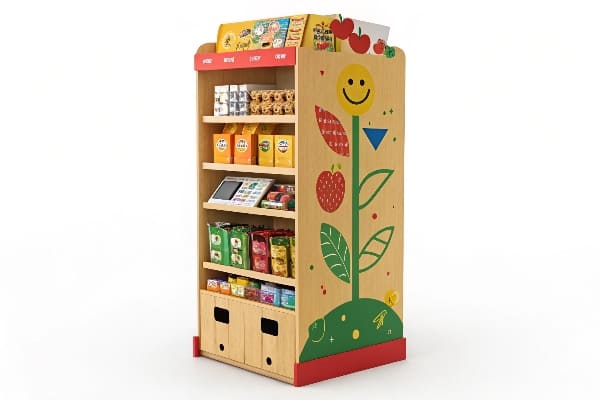
ポップの背後にある心理学
| 買い物客の瞬間 | ポップアクション10 | 脳反応 |
|---|---|---|
| 検索 | 大胆な色 | "私に気づいて" |
| 比較する | 機能弾丸 | 「より良い価値」 |
| 決める | プライスコールアウト | 「今行動」 |
通路からの物語
テキサスの顧客がエンドキャップで一時停止するのを見ました。明るい迷彩パターンは彼の狩猟用のジャケットを響き渡りました。棚カードは「1つのボックスに走る既製のキット」と叫びました。彼はうなずき、箱をカートに入れ、2段階後に競合するブランドを通り過ぎました。ポップは、10の同様の製品で棚に到達する前に、注意と額装価値を捉えました。
重要なメトリック
データを設計に変える
ストアカメラを使用して、リーチゾーンを測定します。高領土スポットは、指紋に抵抗するためにUVワニスを備えたプレミアムボードを取得します。ゾーンの低下は、費用対効果の高いホワイトボードを使用し、結果を傷つけずに予算を抑えています。
ポップマテリアルとは何ですか?
寿命は材料にかかっています。安い株は崩壊し、ブランドの信頼を台無しにし、難破船の繰り返しをします。
主なポップ材料は、段ボール、硬質プラスチック、板金、MDFボードです。それぞれのバランスは、コスト、印刷品質、強度をバランスします。
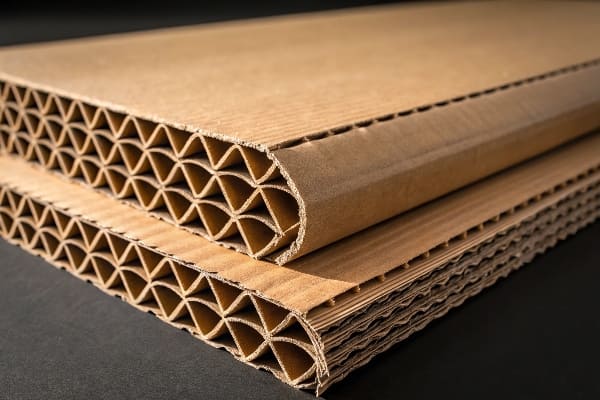
マテリアルマトリックス
| 材料 | 印刷仕上げ | 重量容量 | リサイクル性 | コストレベル |
|---|---|---|---|---|
| 波形(E、B、EB)13 | 高い | 最大40 kg | 素晴らしい | 低い |
| 厳格なPETG | 光沢 | 20 kg | 適度 | 中くらい |
| パウダーコーティングスチール | マット | 100 kg | 貧しい | 高い |
| MDF | スムーズ | 60 kg | 低い | 中くらい |
段ボールがリードする理由
私は段ボールを走らせます:なぜなら:
- それは平らに出荷され、貨物を斬ります。
- フルカラーオフセットプリントポップ。
- 小売業者はクイックリサイクルが大好きです。
強度のアップグレード
米国の屋外チェーンが40 kgの負荷定格を必要としたとき、私は隠れたH字型の木脊椎でEBフルートをラミネートしました。テストでは、90%の湿度で14日後にSAGが示されませんでした。
トリックを仕上げます
ソフトタッチフィルム14は、人々が印刷物、感覚フックをストロークするように誘います。クロスボウグラフィックの矢印にスポットUVを追加します。軽いキャッチ、トリガーの詳細に目を向けます。
認定ガード
FSC、ISO 9001、および重金属のないインク証明15を保持しています。これらの論文はすべてのカートンに出荷され、私の初期のカナダのクライアントの1人を燃やした偽の証明書の痛みを防ぎます。
POPとPOSの違いは何ですか?
小売プロはポップを投げ、まるで同じかのように回ります。彼らは双子ではなく兄弟です。
ポップはショッピングフロア全体をカバーしています。 POSは、通常は支払いエリアの腕の範囲内で販売ポイントに焦点を当てています。
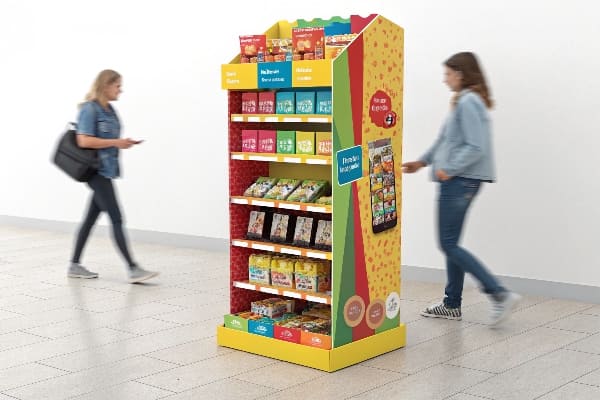
クイック比較テーブル
| 特徴 | ポップ16 | Pos17 |
|---|---|---|
| 位置 | 製品の近くのどこか | チェックアウトゾーン |
| ゴール | 興味と裁判を推進します | 最後の秒アドオンをトリガーします |
| 滞在時間 | 数分まで | 秒 |
| 典型的なサイズ | 大部分から中程度 | 小さい |
戦略アプリケーション
中西部のスポーツグッズバイヤーは、かつてチェックアウト時に特大の床の塔を配置しました。レジ係は、ブロックされた視線、買い物客がカートをぶつけ、タワーの販売が行き詰まったことについて不満を言いました。そのユニットを通路端に移動すると、1週間で販売が2倍になりました。次に、チェックアウト時にスリムなクリップストリップに交換し、ボルトアクセサリーの販売が即座にジャンプしました。
コスト計算
ポップユニットのコストがかかりますが、より広い露出は支出を正当化します。 POSユニットは、買い物客が30 cmで表示されるため、プレミアム印刷が必要です。私は、POSトレイの高解像度ワニスに15%をさらに予算化します。
ワークフローの違い
ポッププロジェクトには、コンセプト、プロトタイプ、船舶テスト、ロールアウトの6週間かかります。 POSトレイは、ダイラインが単純なため、より速く移動します。これを知ることで、メディアの日付を逃さずにクライアントがローンチを計画するのに役立ちます。
結論
適切なディスプレイを選択し、ゾーンを保存するためにそれを一致させ、持続する材料を選択すると、製品はそれ自体を販売します。
このリンクを調べて、パレットスタンドが小売環境での製品の可視性と販売を強化する方法を理解してください。 ↩
エンドキャップディスプレイと、顧客ルーチンを効果的に中断して販売を促進する方法について学びます。 ↩
小売設定での自立型タワーの利点と、それらが製品への露出を最大化する方法を発見してください。 ↩
プラングラムを理解することは、小売スペースを最適化し、製品の配置戦略を改善するために重要です。 ↩
Gravity Feed Displayが小売環境での製品の可視性と販売を強化する方法を学びます。 ↩
展開前に小売ディスプレイの耐久性と安全性を確保するための負荷テストの重要性を発見してください。 ↩
標準の寸法を理解することは、顧客の流れと効率を向上させるために、ストアレイアウトを最適化するのに役立ちます。 ↩
これを探索することで、小売業の運営を強化するコスト削減ロジスティクス戦略が明らかになります。 ↩
A/Bテストについて学ぶことは、販売戦略と顧客エンゲージメントを大幅に高めることができます。 ↩
このリンクを調べて、ポップアクションが買い物客のエンゲージメントを高め、販売を促進する方法を理解してください。 ↩
滞留時間を延ばすための戦略について学び、それがより高い販売と顧客満足度につながる可能性があります。 ↩
小売店における売り上げ料金の重要性と、在庫の決定をどのように通知できるかを発見してください。 ↩
軽量な性質や優れたリサイクル性など、段ボールの利点を調べてください。これにより、パッケージング戦略を強化できます。 ↩
ソフトタッチフィルムがパッケージの触覚をどのように高め、消費者にとってより魅力的になり、販売を改善できるかを発見してください。 ↩
これらの認定を理解することは、パッケージングがブランドの評判に重要である環境と品質の基準を満たすことを保証するのに役立ちます。 ↩
POPディスプレイが小売環境で製品の可視性を高め、販売を効果的に促進する方法を調べてください。 ↩
土壇場での購入に対するPOSディスプレイの影響と、チェックアウト時の販売をどのように増やすことができるかについて学びます。 ↩
